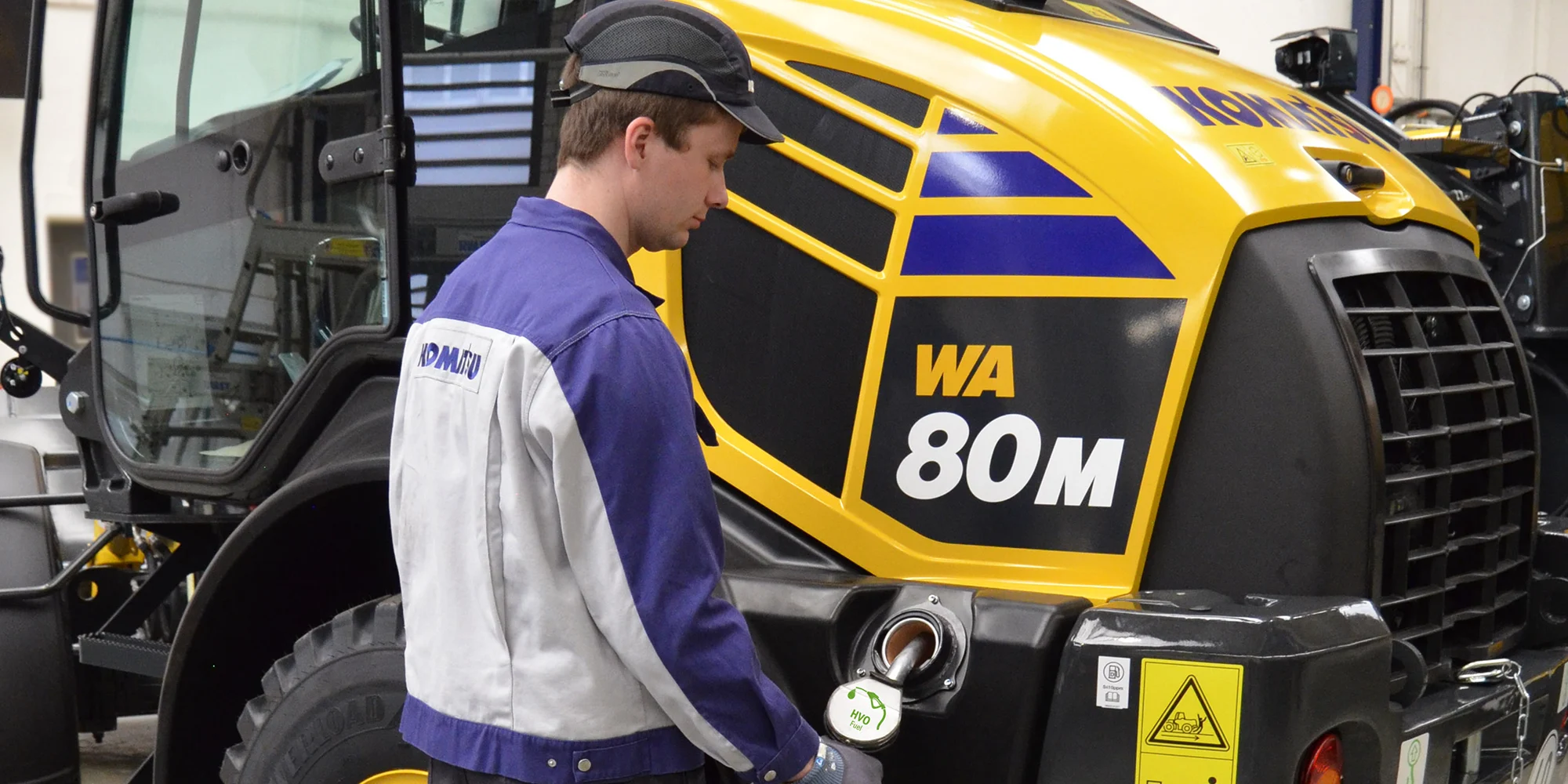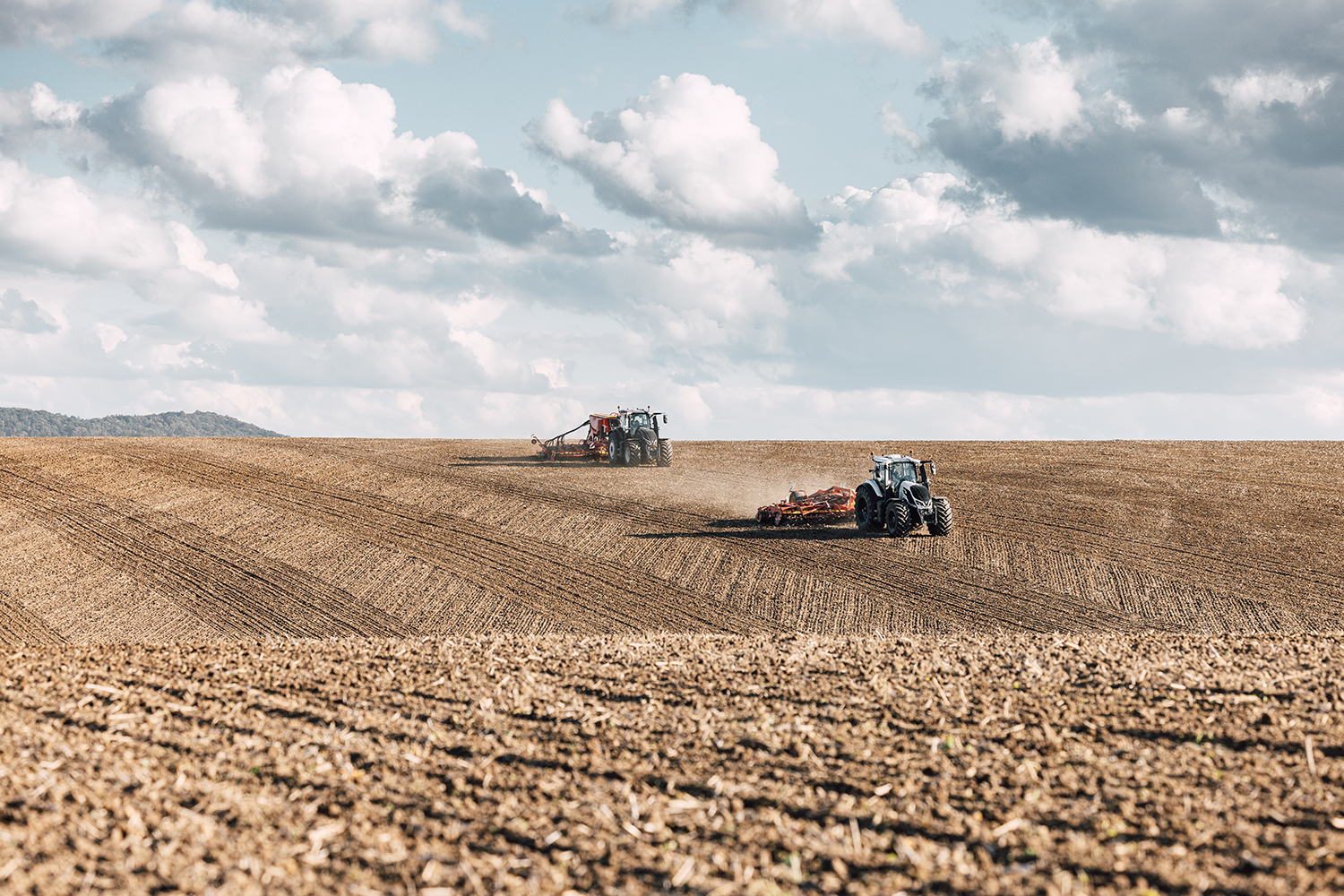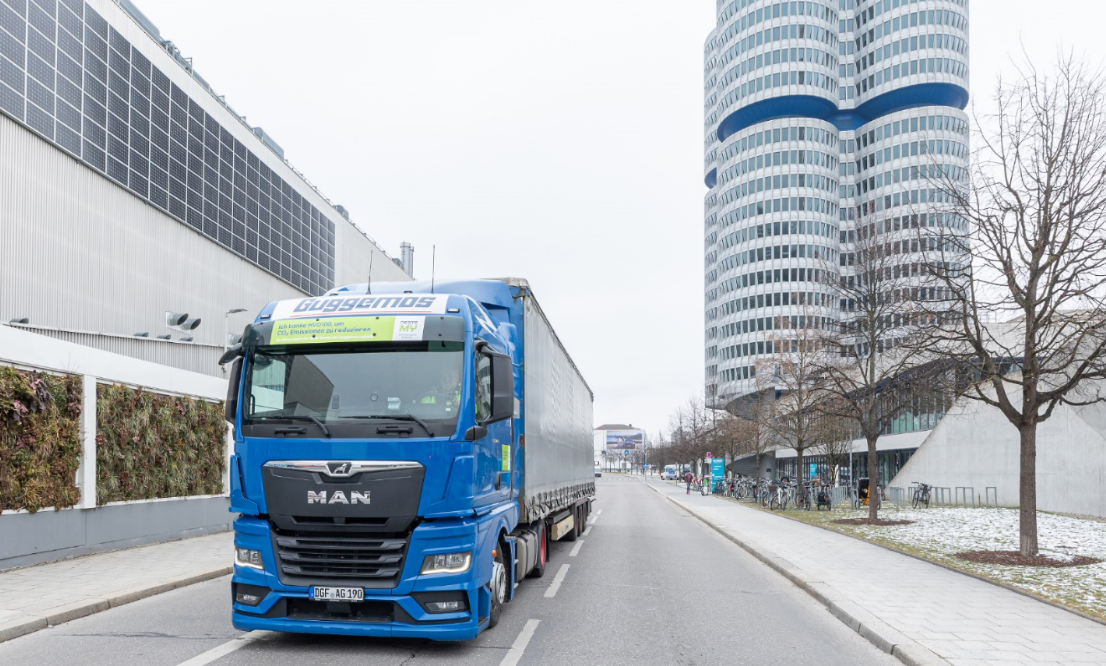
Case story
4 minute read
Komatsu chooses renewable diesel – for people and the planet
Komatsu, a leading multinational equipment manufacturer and original engine manufacturer (OEM), has made a switch to renewable diesel with Neste acting as one of the main suppliers. The company will now use renewable diesel – also known as HVO100 – as factory-fill fuel for all equipment it produces in Europe, ensuring that the fuel tanks of the equipment – a wide range of, wheeled loaders, excavators, and other machines – are filled with renewable fuel when reaching customers’ hands.
Renewable diesel has a crucial role to play in the decarbonization of industries in which Komatsu equipment is used, including construction, mining, and forestry. For example, with Neste MY Renewable Diesel™ greenhouse gas (GHG) emissions can be reduced by as much as 75-95%* over the fuel’s life cycle when compared to fossil diesel. Since having switched to renewable diesel, spokespersons for Komatsu have confirmed that the fuel has met or exceeded all performance expectations in the diesel engines and machines. But what prompted the company to make the switch? Ingo Büscher, Managing Director of Komatsu Germany, Construction Division, outlined three key reasons for adopting renewable diesel:
"HVO100 is effective and economical in reducing emissions. It is stable and reliable, and in addition to reduced greenhouse gas emissions, its use can also reduce fine particle emissions. This is good for the machines, but even better for the planet, and is one way we can do our part."
“As a company thinking and acting globally, 90% of machines sold in Europe are manufactured in Europe. Consequently, Komatsu Germany Construction as a European plant feels obligated to do its utmost to drive CO2 reduction. In the light of high environmental awareness in the German society, our almost 1,000 employees in Hanover are proud to be the first mover within Komatsu to introduce HVO in the company globally,” Büscher says.In addition to the use of renewable diesel, the company continues to research and develop new technologies and optimize business operations with the goal of creating a more sustainable future for the industries it serves. For example, Komatsu works to limit emissions from and energy use in its transports by reusing and remanufacturing machine components within Europe. The company also has active initiatives around renewable energy use, water conservation, and biodiversity. At the Komatsu Forest manufacturing plant in Umeå, Sweden, the switch to renewable diesel was made alongside the plant’s achievement of carbon-neutral production. Komatsu Germany Construction switched to renewable diesel in April, Komatsu UK in May and Komatsu Italia Manufacturing in September. “Our business is based on providing solutions. We have to maintain a thorough understanding of what solutions work for what applications, and for which customers,” Büscher explains.Büscher further points out that for some applications of Komatsu’s products, electrification works well. But depending on the availability of electricity, infrastructure, and the use of the equipment, it does not work for all customers at the moment. Renewable diesel, however, is a solution that can be applied quickly and easily with immediate and measurable results.“Our customers have their own goals and targets related to the environment. By switching to HVO100, we hope to show what is possible with our products and act as a partner in their journey, as well.”Both Büscher and Mats Hultman, Head of OEM Partnerships at Neste, emphasize the value of partnerships such as this one. “Every new collaboration is a big milestone for Neste,” says Hultman.
"We are delighted to demonstrate renewable diesel as an effective solution for hard-to-abate sectors."
From Büscher’s perspective, the partnership with Neste is an ideal one. “Neste is not just a reliable business partner. They are also very aligned with Komatsu’s values, and they treat us in the same way that we aim to treat our partners. ”Komatsu’s long-term aim is to achieve carbon neutrality by 2050, and also to reduce operational and production-related CO2 emissions by 50% by 2030 — goals that are closely aligned with the switch to renewable diesel.“Our customers and partners also want to see change, and legislation may even necessitate it. By acting now, we’re demonstrating our commitment to both our values and their goals,” says Büscher, highlighting the business case for renewable products. “We see it as mandatory to have a vision for the future, while continuing to deliver solutions that work in the present.”Making more sustainable choices and continuously striving to reduce emissions is also Neste’s aim, both for itself and for its customers. Continued partnerships, such as the one with Komatsu, help Neste towards its purpose of creating a healthier planet for future generations.
*) The GHG emission reduction varies depending on the region-specific legislation that provides the methodology for the calculations (e.g. EU RED II 2018/2001/EU for Europe and US California LCFS for the US), and the raw material mix used to manufacture the product for each market.




